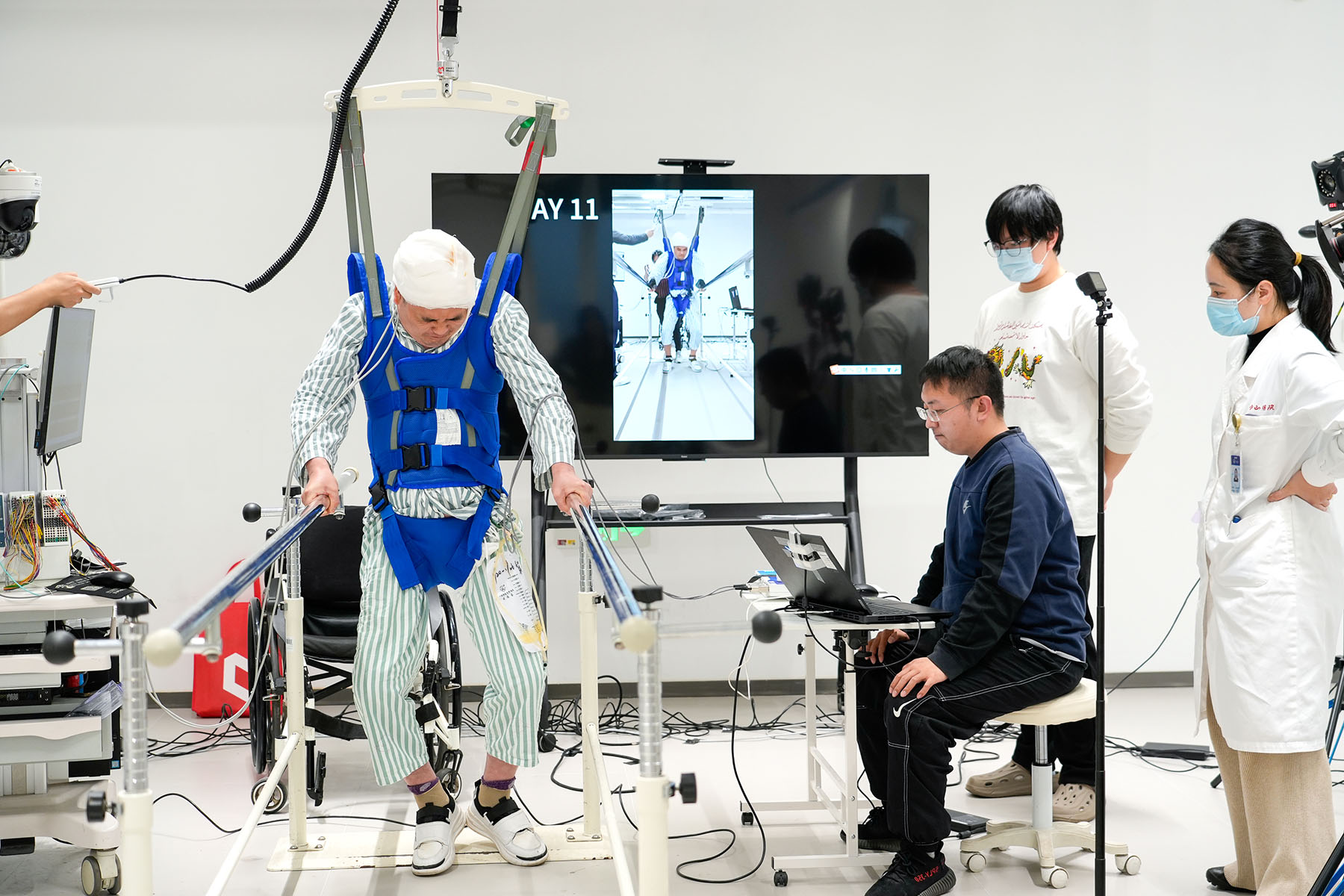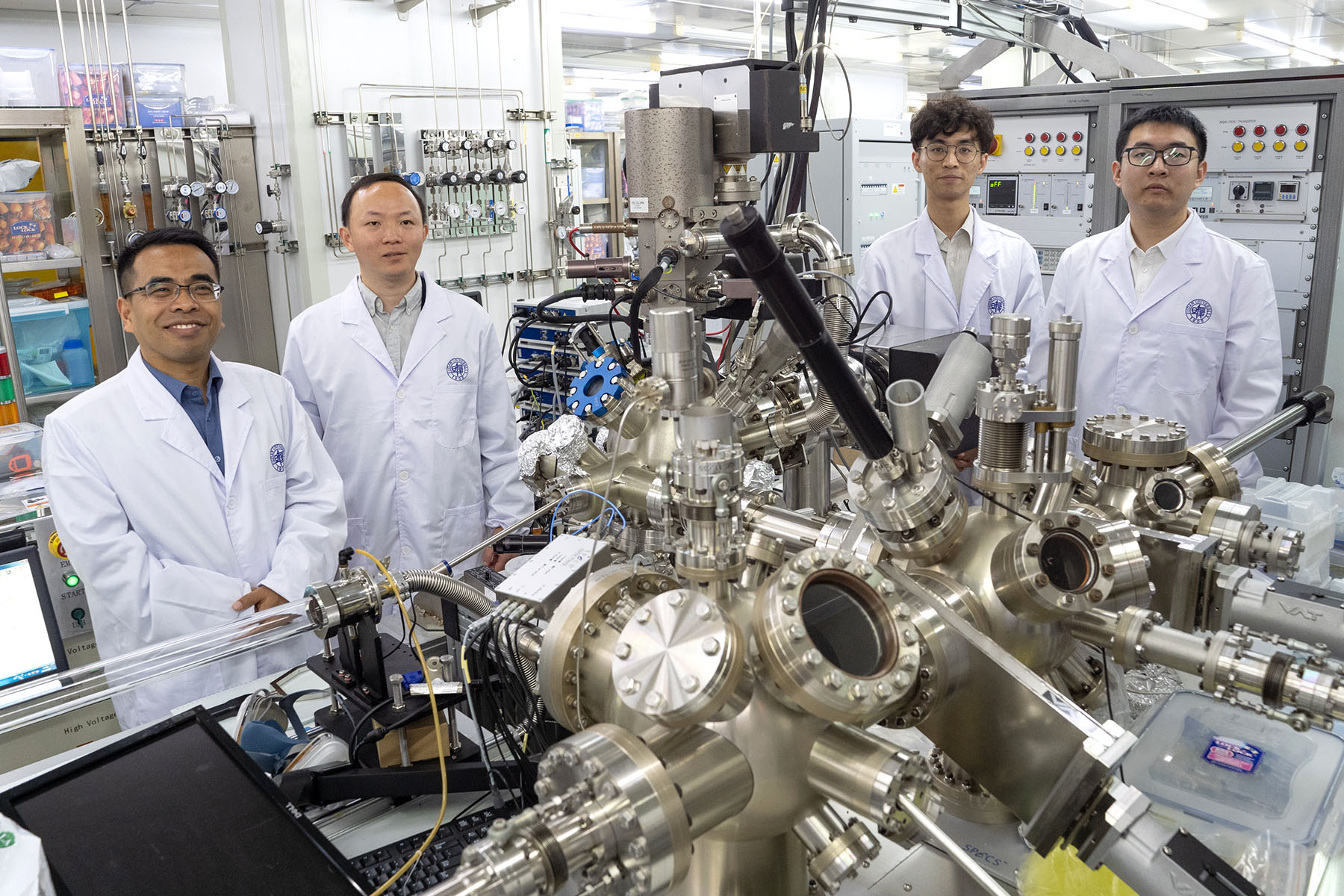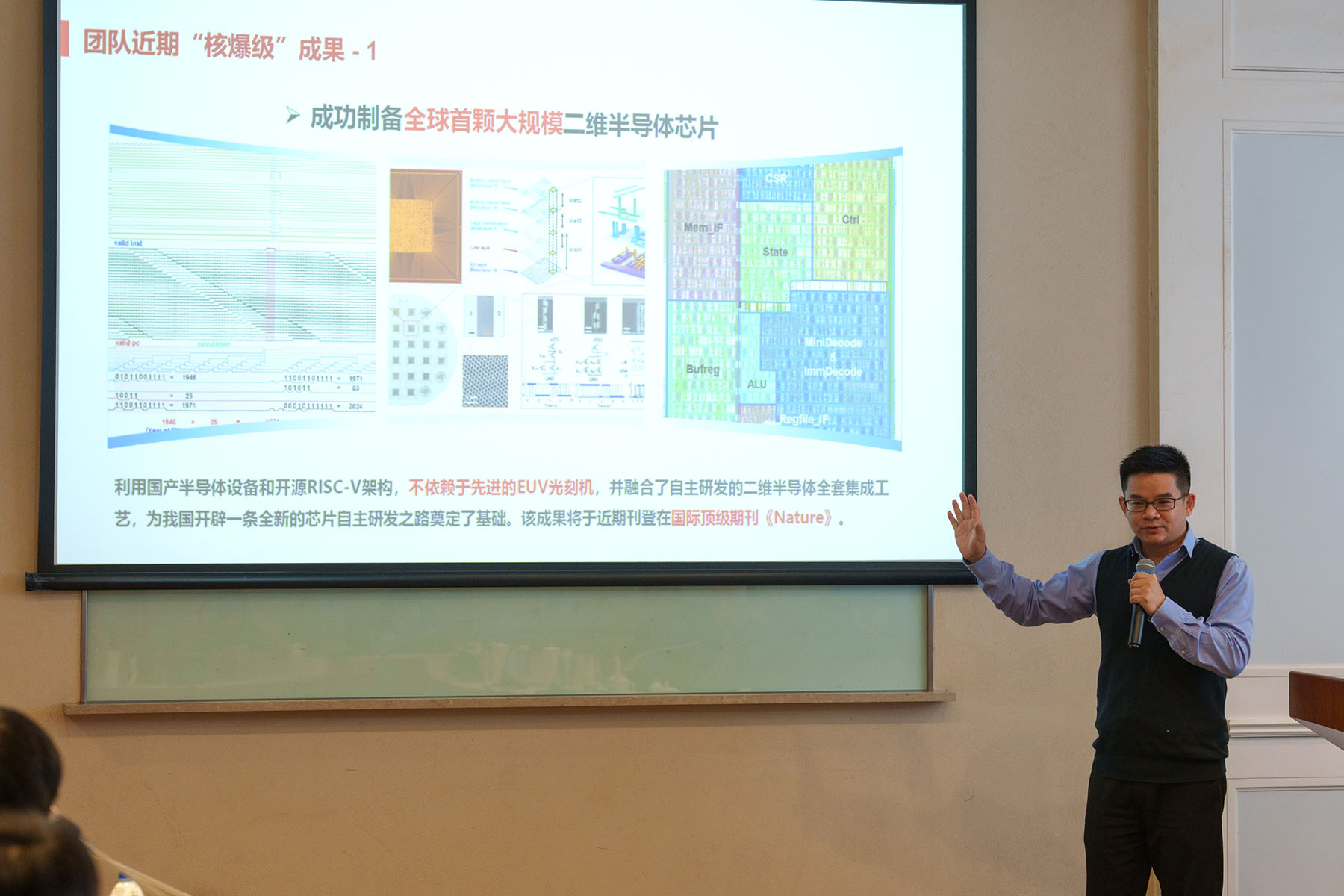City's policies, investment help country maintain global edge in science

Shanghai's leading role in ensuring China's global preeminence in basic scientific research got off to a stellar start this year, with four major papers published in a single issue of the prestigious journal Cell in late January.
The papers were from teams at the Synthetic Science Innovation Research Center at Shanghai Jiao Tong University, or SJTU, the Center for Excellence in Molecular Plant Sciences of the Chinese Academy of Sciences, and the CAS' Center for Excellence in Brain Science and Intelligence Technology.
Also, in the first two months of this year, researchers from Shanghai's Fudan University published six papers in the world's top three journals — Cell, Nature and Science — while another four papers have been accepted. As of early March, researchers from SJTU had published seven papers in these journals.
READ MORE: Fudan team develops new kind of chips
All the research projects focused on significant scientific questions and clear prospects for industrial applications.
With the surge in these publications, Zhao Weishu, an associate researcher at SJTU's School of Life Sciences and Biotechnology, believes the brightest era for the country's basic research is about to arrive.
"With the current breadth of research, sample size, and industrialization capabilities, we are on the verge of a qualitative leap — perhaps a landmark scientific event, such as the emergence of a new theory. This should be something that all scientists work together toward," Zhao said.
"And amid this wave of scientific research, Shanghai, as an important center of basic research in China, shoulders the mission to promote breakthroughs with innovation at the source," she said.

Paper trails
In 1997, Chinese researchers' original research papers published in Nature accounted for about 0.4 percent, data from the Springer Nature Group showed. By 2016, Chinese contributions had risen to around 11 percent.
Fast forward to 2023, when Chinese researchers published over 110,000 papers in leading international journals, representing roughly one-third of the global total, according to the latest annual report released by the China Institute of Scientific and Technical Information in September.
These papers were cited over 818,000 times, ranking China at the forefront globally, the report said.
Researchers said it is no accident that Chinese universities and institutions, especially those in Shanghai, have recently produced world-class research in batches. These achievements are underpinned by a systematic research support mechanism that attracts top talent, while encouraging innovation.
"Last year, 158 papers by scientists from the city were published in Cell, Nature, and Science, accounting for 30 percent of the country's total. They were published at a rate of one paper every two or three days," said Luo Dajin, director of the Shanghai Municipal Science and Technology Commission.
James Crabbe, a supernumerary fellow at Wolfson College, Oxford University, and a former editor-in-chief of an international academic journal, said the situation is "quite different" from the past, when Chinese submissions were sometimes of a lower quality.
Since then, remarkable improvement has been seen, he said.
"There are now more scientific papers published by authors from China than in the United States, which is wonderful. That's a tremendous testament to the value China has given to the world in our science understanding," Crabbe said.

Academic freedom
Since 2014, when Shanghai began to build itself into an international science and technology innovation center, the city's total investment in basic research has grown by 13.8 percent every year.
Last year alone, the proportion of the city's investment in research and development reached about 11 percent, higher than the national level of 6.91 percent.
This year's Shanghai Government Work Report proposed speeding up the construction of basic research pilot zones, strengthening organized scientific research, and continuing support for high-risk, high-value research.
Shanghai's adherence to large-scale, long-term investment to support scientists conducting high-risk, high-value, and long-cycle research is beginning to pay off, experts said.
Outstanding young scientists in Shanghai are aiming to make breakthroughs and provide solutions to academic challenges and benefit the world.
"A large number of outstanding talented people, especially the young and middle-aged who are at the peak of their creativity, have returned to China in the past decade," said Jin Shi, dean of the Institute of Natural Sciences at SJTU.
"Their return represents the future, and is an important sign of the vitality of Chinese science," he said.
The main factors behind the influx of talent include the government's unrelenting support for scientific research, and the increasing internationalization of local universities, with a growing emphasis on scientific research.
Providing researchers with a good working environment and allowing them to explore freely are decisive factors in achieving real scientific breakthroughs, experts said.
Jin said Isaac Newton's discovery of the law of universal gravitation was not the result of a "boss" instructing the English physicist to discover the theory in three months.
The dean cited the difference between scientific research and engineering to further illustrate this point.
"When it comes to engineering, I can specify that the workers must build this building within three months. However, scientific research is spontaneous, with no one being able to dictate how it should be done," said Jin. "It's entirely up to the scientist to figure it out, without any set plan."
When recruiting a researcher, Jin said they look for individuals recognized by their international peers. Once recruited, they are not required to report frequently to their superiors and their work is not interfered with, Jin said.
Also, scientists at the institute are not restricted to publishing research papers only in their field. In March, a mathematics professor and a physics professor jointly published a paper in Physical Review Letters, a top physics journal. "We encourage interdisciplinary research. As long as they can do something truly impactful, we think it's fantastic," Jin said.

Problem solvers
Senior scientist Zhu Shujia, from the CAS's Center for Excellence in Molecular Plant Sciences, was involved in the research published in Cell in January. The study made a research breakthrough on the molecular structure of a particular receptor in mice brains.
"I've been on a quest to push boundaries in this field for 18 years. Unraveling the mysteries of the molecular mechanism of neural ion channels and brain diseases has always been a clear scientific goal," said Zhu.
"Rather than publishing papers, I'm more interested in solving scientific problems and leading the development of the discipline," she said.
Zhou Peng, a researcher with Fudan University's State Key Laboratory of Integrated Chips and Systems, said China's top universities, including Fudan, provide a highly supportive environment for scientists to immerse themselves in exploring their fields, and also delve into new areas.
He compared scientific quests to climbing Mount Qomolangma, which might be challenging, but has "many beautiful sights along the way".
"This journey is long and arduous, largely due to self-imposed pressure," Zhou said. "Yet, in the pursuit of groundbreaking discoveries, we can also reap incremental breakthroughs".
Zhou's research team published two papers in Nature in April.
One was about the development of the world's largest integrated two-dimensional semiconductor micro CPU, which has the potential to revolutionize the industry by replacing traditional silicon-based chips with molybdenum disulfide.
The other paper covered a flash memory device they devised with an unprecedented program speed of 400 picoseconds, equivalent to operating 25 billion times per second. It is the fastest semiconductor charge storage device ever developed, according to the paper.

AI game-changer
Xu Xiaochuang, executive deputy director of the Institute of Science and Technology of Fudan University, said that the effects of the last scientific and technological revolution are declining.
"Future-oriented breakthroughs in scientific research can only be brought about by changing the underlying logic of science and technology," he said. Xu believes AI can bring a revolutionary change in scientific research.
Fudan has been deploying "AI for science", or AI4S, throughout the institution since late 2022.
To date, the university has established scientific intelligence centers in all first-level disciplines. There are more than 100 AI4S research teams at the university, covering research fields including solid-state batteries, material structure, human aging, protein structure prediction, brain-like intelligence, and Chinese civilization exploration. The school plans to establish a global AI4S alliance in May.
With the aid of AI technology, four paralyzed individuals have undergone surgery, the first of its kind in the world. The surgical process, done in Shanghai hospitals, involves implanting electrodes in the brain and spinal cord to build a "neural bridge" with the goal of restoring the ability to walk independently.
ALSO READ: Shanghai promotes innovative financial services
Fudan University's Institute of Science and Technology for Brain-Inspired Intelligence, which developed the technology, said the condition of each patient has improved.
Using AI, along with other approaches, a research team at Fudan designed a molecule not before found in nature, which has the potential to dramatically extend the life span of lithium-ion batteries.
A paper on the research, which may have significant implications for electric vehicles and electronic devices, was published in February in Nature.
"Without a paradigm change in research, our team would not have been able to rely on the traditional research model to achieve such results," said Gao Yue, a leading scientist on the research team.
Contact the writers at zhouwenting@chinadaily.com.cn


